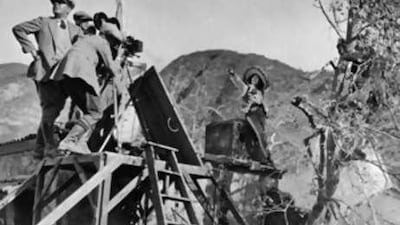Money alone is often insufficient to found an organisation, an enterprise or an industry. Supporters of new businesses must also understand the importance of how a variety of actors must work together to facilitate the creation of new economic activities.
For example, in the early 1900s the emerging film industry in the US helped other areas of business expand. In a similar fashion, over the past 40 years the city of Abu Dhabi has seen tremendous progress. The Abu Dhabi Urban Council has worked hard on a plan to continue this growth and progress through to 2030. Making up one part of this plan are the efforts to spur economic growth in key "? sectors, including health, education, value-added manufacturing and tourism".
I have recently studied the growth and emergence of new industries and sectors, with a particular focus on the emergence of Hollywood. My studies of the success of the American film industry between 1895 and 1930 revealed systematic findings and patterns. I think these may be applicable beyond Los Angeles in the early 20th century and even have implications for Abu Dhabi in the early 21st century.
Given the enormous oil wealth concentrated in Abu Dhabi, I will presume that financial resources will not be the major constraint in growing new sectors such as health, education, manufacturing and tourism. Instead, I think a major challenge facing the emirate will be assembling the social resources that the emergence of new industries may require. In using the phrase "social capital", I have a very particular meaning in mind; specifically, the web of relationships among organisations, and within organisations among employees and groups, that provides information to add value and expand the capabilities of an organisation.
In terms of gaining attention, I can offer the following recommendations based on work I have done along with colleagues: first, policymakers should help new companies and industries engage in effective public relations strategies. It is apparent that media coverage of a new industry is self-generating; that is, past coverage leads to more future coverage - in the same way that properly invested seed money can grow into future profits.
Second, money to found media that provide specialised information to participants in a new sector, such as a trade journal or a trade social networking site, can also be important. The intense communication among participants enhances their ability to be effective in their new work and how they present themselves to important stakeholders. Third, creating more collective experience more rapidly can also be important. The faster a community of professionals, employees and companies can build a base of experience in the new sector, the more quickly that sector will gain exposure to the stakeholders that will help them succeed.
Fourth, the value of this experience will be magnified by facilitating connections among the key actors on the production side of the new industry. In particular, I interpret my findings to suggest that a greater concentration of relationships, that is when relatively fewer actors account for relatively more of the total connections, is important. Specifically, the presence of such central actors is associated with more rapid increases in attention to the new sector.
Of course, merely gaining attention is not sufficient for a new sector to grow; it is also important to get the right kind of attention. In general, the recommendations for gaining favourable evaluation of a new sector are the same as for gaining attention but with two significant differences: first, there is a general tendency for favourable evaluation to be self-generating - that is, more favourable evaluations in the past lead to more favourable evaluations in the future. Interestingly, there is also a tendency for negative evaluations in the past to not be self-generating; that is, more negative evaluations lead to more favourable future evaluations.
I believe this is because a mobilised, connected set of actors in the new sector will respond to negative evaluations. The danger comes from discussions of the new sector that are neutral rather than positive or negative. In fact, the evidence from my work suggests the possibility that coverage has a tendency to drift from neutral to negative. Perhaps this occurs because participants are not motivated to respond to neutral coverage or pay less attention to it. In addition, the concentration of ties that led to more attention to the new industry also tends to be associated with more negative evaluation of the sector. This may result from two different processes both of which should be considered by proponents of new industries and sectors. Given that this may be because actors in central positions tend to be targets for media coverage, there should be considerable attention to who is in those positions and how various persons are promoted to or rotated through central positions in the new sector.
An alternate possibility is that actors in central positions act to promote narrow interests of a few participants rather than broad interests of all or most participants in the new sector. This can lead to fragmentation and division within the new sector, making it more difficult to grow and promote the sector with important stakeholders. Again, some attention to the processes by which certain persons or organisations move into central positions in the network and encouraging them to promote broad interests is important.
The speed of attention and evaluation now is different to what it was 100 years ago and perhaps many of these processes will occur more quickly today than they did in the US in 1910. Nonetheless, I think the emergence of Hollywood is a notable event that may have some lessons to consider as Abu Dhabi moves toward 2030. Stephen Mezias, professor of entrepreneurship and family enterprise, is the holder of the Abu Dhabi Commercial Bank chair in international management and the academic director at the INSEAD Middle East Campus in Abu Dhabi.

